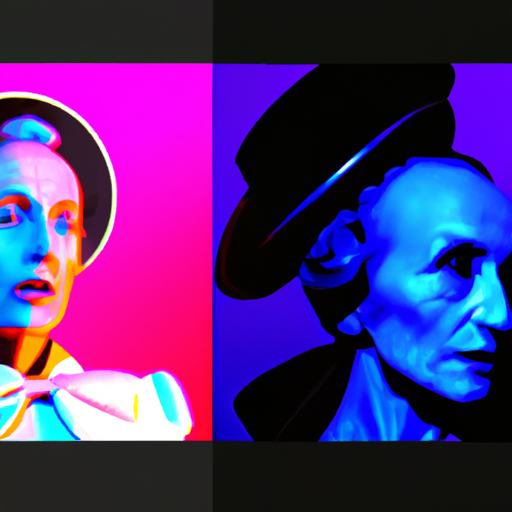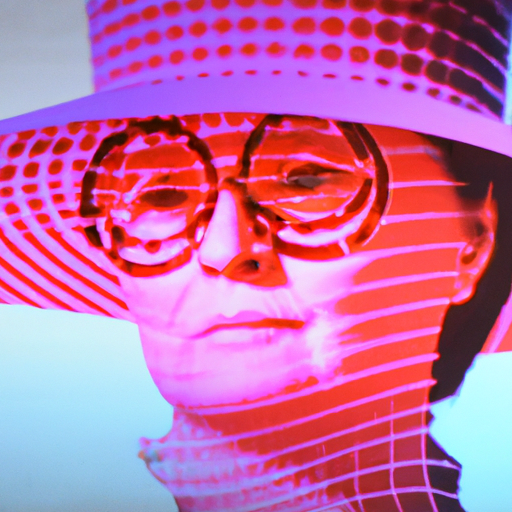
-
Table of Contents
The Surreal Effect: Dali-esque Concepts in Design

Design is a powerful tool that can evoke emotions, challenge perceptions, and transport us to new worlds. One of the most intriguing and captivating design styles is the surreal, which draws inspiration from the works of the legendary artist Salvador Dali. Dali’s unique and imaginative concepts have influenced various fields, including art, fashion, architecture, and advertising. In this article, we will explore the surreal effect and how Dali-esque concepts are incorporated into design, creating visually stunning and thought-provoking experiences.
The Surreal Effect: A Brief Overview
The surreal effect, also known as surrealism, is an artistic movement that emerged in the early 20th century. It sought to unleash the power of the unconscious mind, tapping into dreams, fantasies, and irrational thoughts. Salvador Dali, a prominent figure in surrealism, became known for his bizarre and dreamlike paintings that challenged reality and pushed the boundaries of imagination.
Designers who embrace the surreal effect aim to create visually striking and unconventional experiences that captivate and engage the audience. By incorporating Dali-esque concepts into their work, they can evoke emotions, spark curiosity, and leave a lasting impression on viewers.
The Influence of Dali in Design
Dali’s influence can be seen in various design disciplines, from graphic design to product design. His unique style and concepts have inspired designers to think outside the box and experiment with unconventional ideas. Let’s explore some examples of how Dali-esque concepts are incorporated into design:
1. Graphic Design
In graphic design, the surreal effect can be achieved through the use of unexpected juxtapositions, distorted perspectives, and dreamlike imagery. By combining unrelated elements or distorting familiar objects, designers can create visually striking compositions that challenge the viewer’s perception of reality.
For example, the cover art for the album “The Dark Side of the Moon” by Pink Floyd, designed by Storm Thorgerson, features a prism refracting light into a spectrum of colors. This surreal image not only captures the essence of the album but also creates a visually captivating experience for the viewer.
2. Fashion Design
In the world of fashion, designers often draw inspiration from surrealism to create avant-garde and unconventional garments. Dali’s influence can be seen in the works of designers like Elsa Schiaparelli, who collaborated with Dali to create iconic pieces such as the “Lobster Dress” and the “Tear Dress.”
These garments feature unexpected elements and unconventional shapes, challenging traditional notions of fashion. By incorporating Dali-esque concepts into their designs, fashion designers can create visually stunning and thought-provoking pieces that push the boundaries of what is considered wearable art.
3. Architecture
Architecture is another field where Dali’s influence can be observed. Surrealist architecture aims to create buildings that defy logic and challenge traditional design principles. By incorporating unexpected shapes, distorted proportions, and unconventional materials, architects can create structures that appear to be straight out of a dream.
One notable example is the Dali Museum in Figueres, Spain, designed by architect Emilio Perez Pinero. The museum’s design features a giant geodesic dome and a facade adorned with giant eggs and bread sculptures, paying homage to Dali’s fascination with surrealism and his love for unconventional forms.
The Impact of Dali-esque Concepts in Design
The incorporation of Dali-esque concepts in design has a profound impact on the viewer. It challenges their perception of reality, sparks curiosity, and creates a memorable experience. Here are some key impacts of the surreal effect in design:
1. Emotional Engagement
The surreal effect evokes emotions and creates a strong emotional connection with the viewer. By presenting familiar objects in unfamiliar ways or combining unrelated elements, designers can elicit surprise, wonder, and even a sense of unease. This emotional engagement leaves a lasting impression on the viewer and enhances their overall experience.
2. Memorable Experiences
Designs that incorporate Dali-esque concepts are often memorable and stand out from the crowd. The unconventional and visually striking nature of these designs makes them hard to forget. Whether it’s a surreal advertisement, a piece of furniture, or a building, the use of surreal elements creates a memorable experience that lingers in the viewer’s mind.
3. Creative Inspiration
Dali’s surreal concepts inspire designers to think outside the box and push the boundaries of their creativity. By embracing the surreal effect, designers can break free from conventional design norms and explore new possibilities. This creative inspiration not only benefits the designers themselves but also drives innovation in various design disciplines.
Conclusion
The surreal effect, influenced by Salvador Dali’s unique and imaginative concepts, has had a profound impact on design. From graphic design to fashion design and architecture, Dali-esque concepts have inspired designers to create visually stunning and thought-provoking experiences. By challenging perceptions, evoking emotions, and creating memorable experiences, the surreal effect in design continues to captivate and engage audiences worldwide. As we continue to explore the boundaries of design, the surreal effect will undoubtedly play a significant role in shaping the future of creative expression.
